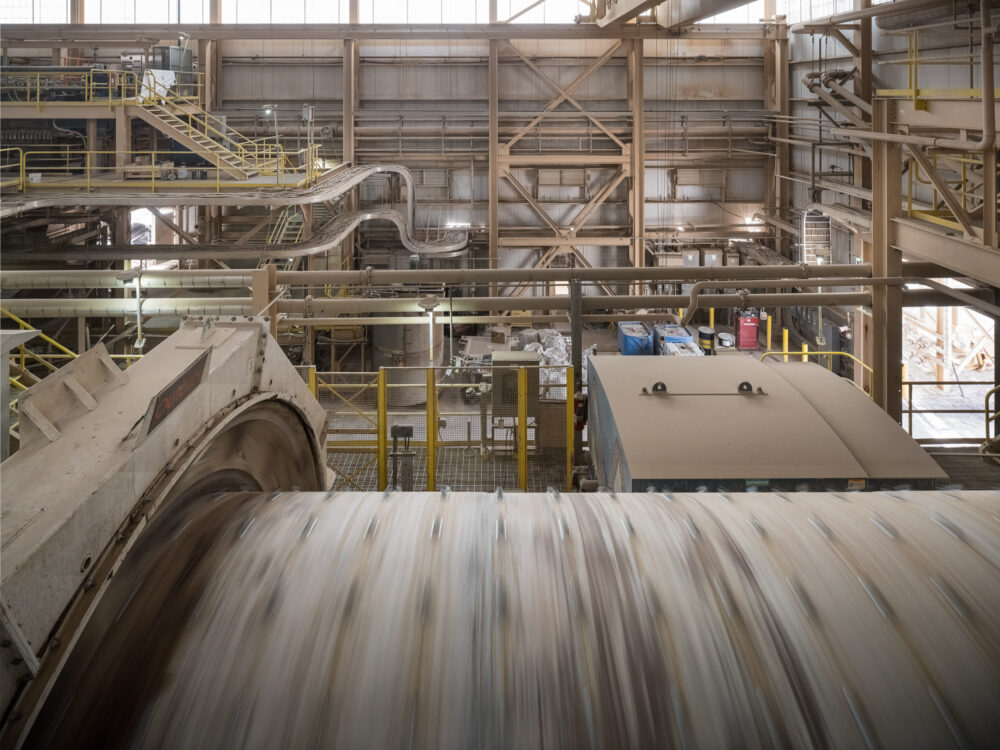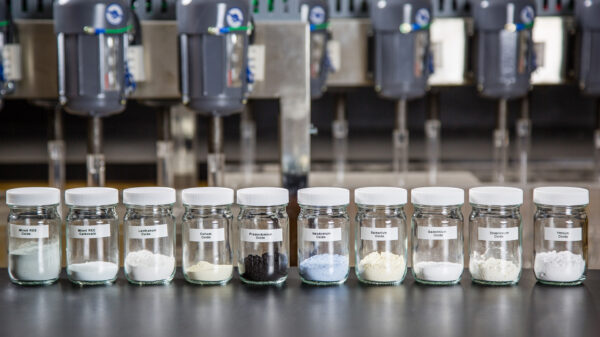MP Materials (NYSE: MP) is breaking production records in 2025 as demand for rare earth accelerates.
The company reported second-quarter neodymium and praseodymium (NdPr) output of 597 metric tons, a 119 per cent jump from last year as part of its financial statements released earlier this month. That figure edged past its prior record of 563 metric tons set in the first quarter.
First-half NdPr production reached 1,160 metric tons, already close to MP’s full-year 2024 output of 1,294 metric tons. In addition, production was 188 per cent higher than the same period last year. MP has steadily scaled NdPr output since launching production in late 2023.
Rare Earth Oxide (REO) production also advanced. The company produced 13,145 metric tons in the second quarter, a 45 per cent increase from a year ago. The performance ranked as the second-highest in company history. Furthermore, it followed 12,213 metric tons produced in the first quarter. Executives linked the gains to higher recoveries tied to Upstream 60K optimizations.
The company earns revenue primarily from sales of rare earth concentrate and NdPr oxide and metal. Customers are concentrated in Japan, South Korea, and across Asia. As separated rare earth production expands, MP expects NdPr oxide and metal to drive a greater share of revenue.
Lynas Rare Earths also reported a milestone. The company produced 2,080 tons of NdPr in the fiscal Q4, exceeding the 2,000-ton mark for the first time. Total REO production was 3,212 tons during the quarter. Additionally, Lynas credited the gains to commissioning progress under its Lynas 2025 capital project, which targets 10,500 tons of annual capacity this year.
Read more: NevGold pulls up even more promising antimony grades from Nevada property
Read more: NevGold’s Nevada property may just be the next American antimony resource of scale
Analysts are generally positive on MP Materials
Meanwhile, Energy Fuels Inc (NYSEAMERICAN: UUUU) continues to expand its role in separated rare earths. The company has produced mixed rare earth carbonate from monazite sands since 2021 at its White Mesa Mill in Utah. In 2024, it added capacity to produce up to 1,000 tons of separated NdPr per year. From this, it generated 38 tons of NdPr last year. Energy Fuels has sent product samples to magnet makers and other customers worldwide. Early testing responses have been positive.
Investor sentiment has followed the production growth. Shares have soared 362.9 per cent this year. That far outpaced the rare earth industry’s 17.8 per cent growth. Additionally, the Basic Materials sector rose 14.7 per cent, while the S&P 500 gained 9.6 per cent.
Analysts have lifted earnings expectations. The Zacks Consensus Estimate now calls for a 2025 loss of 35 cents per share, narrowing from earlier forecasts. However, the 2026 estimate points to a profit of 97 cents per share. In addition, both figures have risen in the past 60 days.
Canaccord Genuity reiterated a Buy rating on MP Materials on August 8 and set a price target of 28 dollars.
Analysts cited strengthening demand for neodymium magnets and noted MP’s ongoing move downstream into separation and alloy production. Morgan Stanley followed with an Equal-Weight rating in mid-July, assigning a 20-dollar target.
The firm expressed caution over near-term pricing pressure but acknowledged MP’s strong long-term positioning in the rare earth supply chain. Meanwhile, Baird maintained a Neutral stance in late June with a 22-dollar target, pointing to operational stability but urging patience as markets digest new supply.
Read more: NevGold’s latest drill results extend priority target at Limo Butte by over 200 metres
Read more: NevGold’s latest Nevada drill results show exceptional gold mineralization
All part of a greater geopolitical plan
The United States has turned to several strategies to reduce reliance on China for critical minerals. One key approach involves sourcing antimony from allied countries with more stable political ties. Rather than buy directly from high-risk regions, U.S. importers often route materials through intermediaries.
Vietnam and the United Arab Emirates have emerged as central transit hubs. Both nations act as re-export points, enabling shipments to arrive in the U.S. as processed or repackaged goods. In addition, this practice obscures the true origin of antimony, often China or other politically sensitive states. The strategy reduces traceability while ensuring supply continuity.
Policy tools also play a growing role. The FAST-41 program—short for “Fixing America’s Surface Transportation Act, Title 41”—has streamlined approvals for strategic mining projects. Perpetua Resources Corp (TSE: PPTA) (NASDAQ: PPTA) has been a primary beneficiary. The company is advancing the Stibnite Gold Project in Idaho, one of the only domestic antimony sources.
In 2023, the Department of Defense awarded Perpetua over USD$24 million to support its antimony development. Furthermore, the project’s dual focus on gold and strategic metals illustrates a model the government increasingly supports. Such initiatives highlight Washington’s intent to secure critical minerals through domestic production.
Other companies are adopting a similar playbook. NevGold Corp (CVE: NAU) (OTCMKTS: NAUFF) (FRA: 5E50), primarily a gold explorer, has expanded into antimony and other strategic minerals across the western U.S. Additionally, this diversification positions NevGold to qualify for FAST-41 support. Federal agencies have signaled they will prioritize projects that strengthen domestic resilience in mineral supply chains.
.
NevGold Corp is a sponsor of Mugglehead news coverage
.













